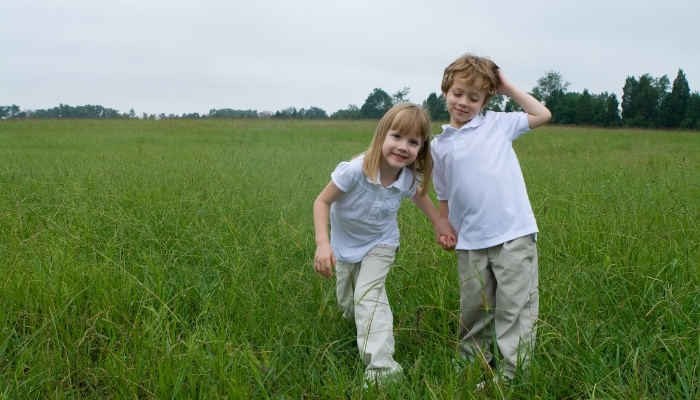Di Di Twins Switching Sides in the Womb: What To Know
As an expectant parent, I was shocked to learn that my unborn twins were switching sides in the womb! It sounded like a crazy phenomenon and I had to find out more. After some research, I discovered that this situation is far from unusual. In fact, it’s so common that it has been given its own name: Di Di Twins Switching Sides.
Di Di Twin Movement in the Womb
Di Di twins are a rare phenomenon that occurs in the womb. Also known as twin-to-twin transfusion syndrome, Di Di twins occur when two separate embryos share one placenta, making them identical but genetically distinct from each other. This type of twinning happens in less than 5% of all pregnancies and is often associated with high-risk complications for both babies.
A recent study has revealed an even more unusual occurrence within these pregnancies – the shifting of the babies’ positions in the womb. During normal pregnancy development, it is common for twins to switch sides and roll around in order to find optimal positioning for their growth within the mother’s womb.
However, this study showed that Di Di twins sometimes switch sides multiple times throughout gestation and can even move between different compartments or “rooms” within the shared sac.
Normal Position of Di Di Twins

Di Di Twins, or diamniotic-dichorionic twins, are a very rare pregnancy phenomenon in which two babies share the same amniotic sac and placenta but have separate chorions. This type of twin pregnancy is associated with several unique risks that make it distinct from other types of multiple pregnancies.
One such risk is known as “Di Di Twins Switching Sides”, where one or both of the fetuses switch positions within the womb during gestation. Although this can happen in any type of multiple births, it is most common among Di Di twins due to their close proximity and shared environment.
This phenomenon can cause concern for pregnant women carrying Di Di twins when they attend ultrasounds and observe their babies switching sides in utero.
Why Di Di Twins Sometimes Switch Places
The Di Di Twins are a phenomenon that has captivated medical science for years. These identical twins are named after the di-di (or diamniotic-dichorionic) placenta they shared while in utero, a rare occurrence among twin pregnancies.
What makes this even more extraordinary is the fact that during gestation, the twins will sometimes switch sides in the womb! This phenomenon has been documented by researchers since 1977 and is known as ‘somatopagus switching’ or ‘mirror imaging’.
This peculiar quirk of nature occurs when one of the fetuses moves from one side of the uterus to the other side, mirroring its sibling’s position. It is believed that this occurs due to limited room in utero and it can occur multiple times throughout various stages of development.
When Switching Sides is Most Likely to Occur
Do Di Twins switching sides in the womb occur frequently? It is a widely discussed topic that has many expecting parents interested and curious. According to research, it is most likely that Di twins will stay in the same position throughout their development. However, there are occasions when one or both of the fetuses switch positions during development.
The phenomenon of twins switching sides in the womb is known as ‘twin torsion’ or ‘twin reversal’ and can be particularly common for Di Di twins (identical twins who share the same placenta). This occurs when either one fetus twists around itself, or one fetus moves out of its initial position and flips over to face the other twin. Twin reversal usually takes place between weeks 8-12 of gestation but can also happen later on as well.
Is It Harmful to Di Di Twins To Switch Sides?
Di Di twins are identical twins that develop in the womb when a fertilized egg splits into two separate embryos. As a result, these twins share the same placenta and amniotic sac and grow side by side in the same uterus. Some parents wonder if it is dangerous for their Di Di twins to switch positions in the womb during pregnancy.
The truth is that most of the time, switching sides does not cause any harm to either twin. An ultrasound can be done at around 18-20 weeks of gestation to determine if there has been any switching. If a switch does occur, it usually happens between 8-14 weeks of pregnancy and is generally harmless as long as both babies remain within their shared amniotic sacs. Check Prenatal Appointments for Twins: What To Expect
Do All Di Di Twins Switch Places at Some Point?
Di Di Twins, also known as diamniotic-dichorionic twins, occur when two separate amniotic sacs and placentas develop in the same uterus. This type of twinning is quite rare and can lead to a plethora of complications during pregnancy due to differences in blood flow from one fetus to the other. The question that remains is: do all Di Di twins switch sides in the womb?
A study conducted by researchers at the University of California San Diego revealed that around one-quarter of all Di Di twins switch places at least once or twice during the course of their development in utero. This may be due to insufficient space within a smaller uterus, or possibly due to maternal movement while carrying multiple fetuses. It’s important for expecting mothers to receive regular ultrasounds throughout their pregnancy so that any potential changes can be monitored closely.
Related Questions
What Percentage of Di Di Twins Are Identical?
The exact percentage of Di Di twins that are identical is unknown. However, it is estimated that approximately 25-30% of Di Di twins are identical. This means that the other 70-75% of Di Di twins are fraternal or non-identical.
Di Di twins occur when two separate embryos form from two separate eggs and each egg is fertilized by a different sperm. This means that the genetic makeup of the two embryos can be different, resulting in fraternal or non-identical twins. In contrast, if one egg splits into two after fertilization, the resulting embryos will have identical DNA and will be considered identical twins.
While the exact percentage of Di Di twins that are identical is unknown, it is estimated to be around 25-30%. The remaining 70-75% of these twin pairs are fraternal or non-identical.
How Common Are Di Di Twins?
Di Di twins, or dichorionic diamniotic twins, are the most common type of multiple births. This type of twinning occurs when two separate eggs are fertilized by two different sperm and implanted in the uterus at the same time. As a result, each twin has their own placenta and amniotic sac.
Di Di twins account for about 70-80% of all multiple births. While this is the most common type of twinning, it is still considered to be relatively rare overall. The chances of having Di Di twins are estimated to be between 1 in 350 to 1 in 500 pregnancies.
In addition to being more common than other types of multiple births, Di Di twins also tend to have better outcomes due to the fact that they have their own placentas and amniotic sacs. This allows them to receive adequate nutrition and oxygen without competing with one another for resources.






